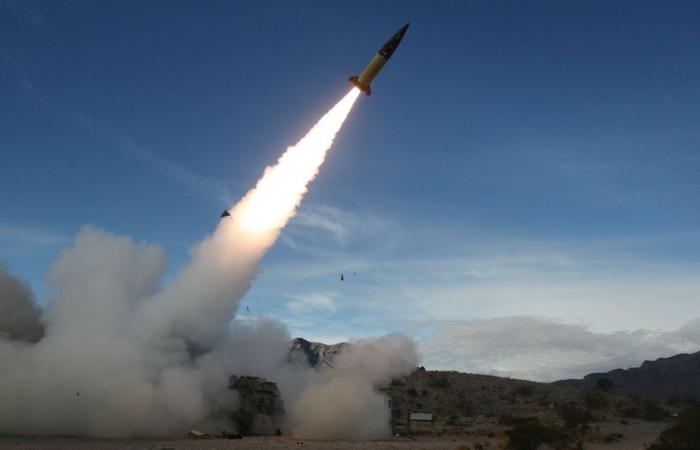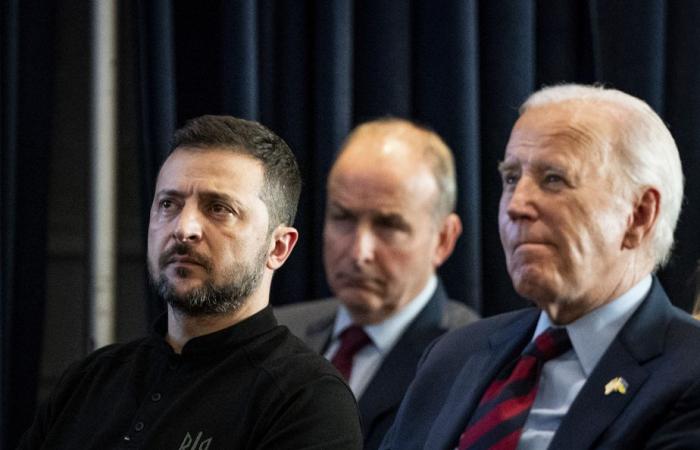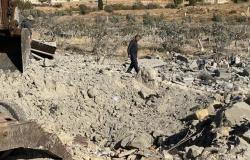(Washington) President Joe Biden authorized Ukraine to use long-range missiles supplied by the United States for the first time in strikes inside Russia, U.S. officials said.
Updated at 12:30 a.m.
Adam Entous, Eric Schmitt et Julian E. Barnes
The New York Times
The weapons will likely be used initially against Russian and North Korean troops to defend Ukrainian forces in the Kursk region of western Russia, the officials said.
Joe Biden's decision constitutes a major change in American politics. It has divided his advisers and comes two months before President-elect Donald Trump takes office, who has pledged to limit his support for Ukraine.
The authorization for the Ukrainians to use the long-range missiles, known as Army Tactical Missile Systems, or ATACMS, was granted in response to the surprise decision by the Russia to engage North Korean troops in the fight, officials said.
Ukrainian President Volodymyr Zelensky did not confirm the strike authorization, but suggested on Sunday that the number of missiles used to strike the Russians would be greater than the lifting of restrictions.
“Today, many media outlets are talking about the fact that we have received authorization to take appropriate measures,” Mr. Zelensky said in his nightly address. “But blows are not delivered with words. Such things are not announced. The rockets will speak for themselves. »
Relaxation
Mr Biden began easing restrictions on the use of US-supplied weapons on Russian soil after Russia launched a cross-border assault in May towards Kharkiv, Ukraine's second city.
To help the Ukrainians defend Kharkiv, Mr. Biden authorized them to use the High Mobility Artillery Rocket System (HIMARS), which has a range of about 80 km, against Russian forces directly on the other side of the border. In contrast, Mr. Biden did not authorize the Ukrainians to use longer-range ATACMS, which have a range of around 300 km, to defend Kharkiv.
PHOTO HAIYUN JIANG, ARCHIVES THE NEW YORK TIMES
Ukrainian President Volodymyr Zelensky and his American counterpart Joe Biden
Officials said they did not expect the change to fundamentally alter the course of the war, but that one goal of the policy change was to send a message to the North Koreans that they understanding that their forces were vulnerable and that they should not send them in larger numbers.
They added that the Ukrainians would likely use the missiles first against Russian and North Korean troops who threaten Ukrainian forces in Kursk, but that Mr. Biden could authorize them to use the weapons elsewhere.
Some U.S. officials have expressed concern that Ukraine's use of missiles across the border could prompt Russian President Vladimir Putin to retaliate with force against the United States and its coalition partners.
But others said they believed these fears were exaggerated.
The Russian army launches a major assault with around 50,000 troops, including North Korean troops, on entrenched Ukrainian positions in Kursk, aiming to retake all Russian territory that the Ukrainians seized in August.
The Ukrainians could use ATACMS missiles to strike Russian and North Korean troop concentrations, key military equipment, logistical nodes, munitions depots and supply lines inside Russia.
This could help the Ukrainians reduce the effectiveness of the Russian–North Korean assault.
Thorny subject
The question of whether to arm Ukraine with long-range ATACMS has been a particularly sensitive topic since Russia's full invasion of Ukraine in February 2022.
Some Pentagon officials opposed providing these weapons to the Ukrainians, saying the US military had only limited stockpiles. Some White House officials feared that Putin would widen the war if they gave the missiles to the Ukrainians.
Proponents of a more aggressive stance toward Moscow say Mr. Biden and his advisers were too easily intimidated by Mr. Putin's hostile rhetoric and that the administration's progressive approach to The Ukrainians' weaponry put them at a disadvantage on the battlefield.
Supporters of Mr. Biden's approach say it has largely succeeded in avoiding a backlash from Russia.
Authorizing long-range strikes on Russian territory using American missiles could be a game-changer.
In August, the Ukrainians launched their own cross-border assault in the Kursk region, where they captured part of Russian territory.
Since then, U.S. officials have become increasingly concerned about the state of Ukraine's military, which has been strained by simultaneous Russian assaults in the east, in Kharkiv and now Kursk.
Arrival of Trump
The introduction of more than 10,000 North Korean troops and Mr. Biden's response come as Mr. Trump prepares to return to office with the stated goal of quickly ending the war.
Mr. Trump has said little about how he intends to resolve the conflict. But Vice President-elect JD Vance has outlined a plan that would allow the Russians to keep the Ukrainian territory their forces have seized.
The Ukrainians hope to be able to exchange Russian territory they hold in Kursk for Ukrainian territory held by Russia in future negotiations.
If the Russian assault on Ukrainian forces in Kursk is successful, Ukraine could be left with little or no Russian territory to offer Moscow in a trade.
Mr. Zelensky has long sought permission from the United States and its coalition partners to use long-range missiles to strike Russian soil.
The British and French armies have supplied the Ukrainians with a limited number of Storm Shadow and SCALP missiles, which have a range of about 250 km, less than the American missile system.
While British and French leaders have expressed support for Mr. Zelensky's request, they have been reluctant to allow the Ukrainians to begin using their missiles on Russian soil unless Mr. Biden agrees that the Ukrainians do the same with ATACMS.
Possible consequences on alloyed soil?
Some of Joe Biden's advisers had relied on a recent assessment by US intelligence services that Mr Putin could respond to the use of long-range ATACMS on Russian soil by ordering the Russian army or its spy agencies to retaliate, possibly with lethal force, against the United States and its European allies.
The assessment warned of several possible Russian responses, including increased arson and sabotage targeting facilities in Europe, as well as potentially deadly attacks on U.S. and European military bases.
Officials said Mr. Biden was persuaded to make the change in part by the very audacity of Russia's decision to launch North Korean troops into Ukrainian lines.
He was also influenced by fears that the Russian assault force could overwhelm Ukrainian troops at Kursk, if they were not allowed to defend themselves with long-range weapons.
This article was originally published in The New York Times.
Read the original article (in English; subscription required)







